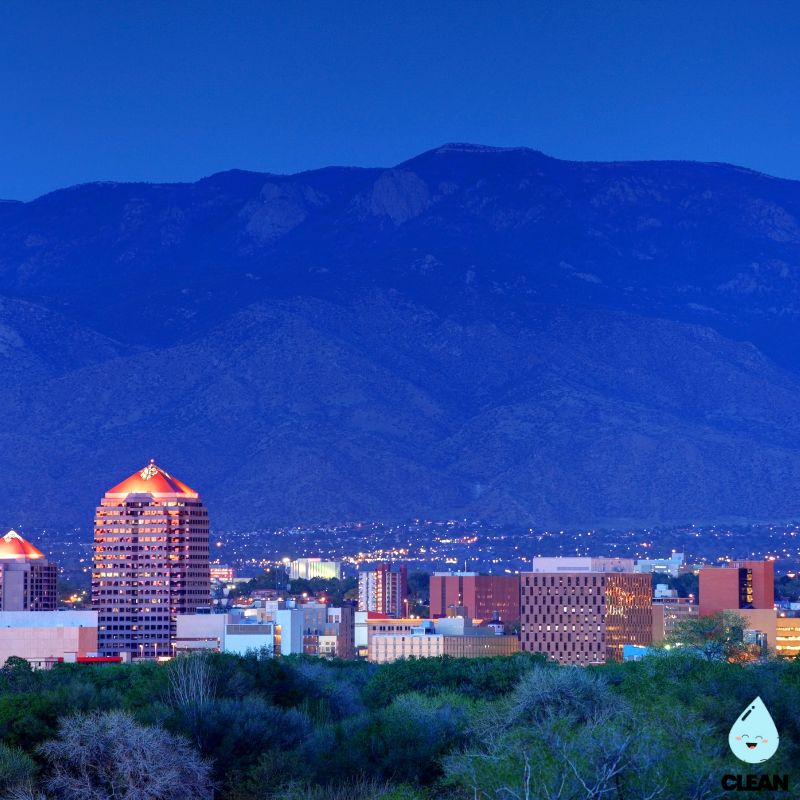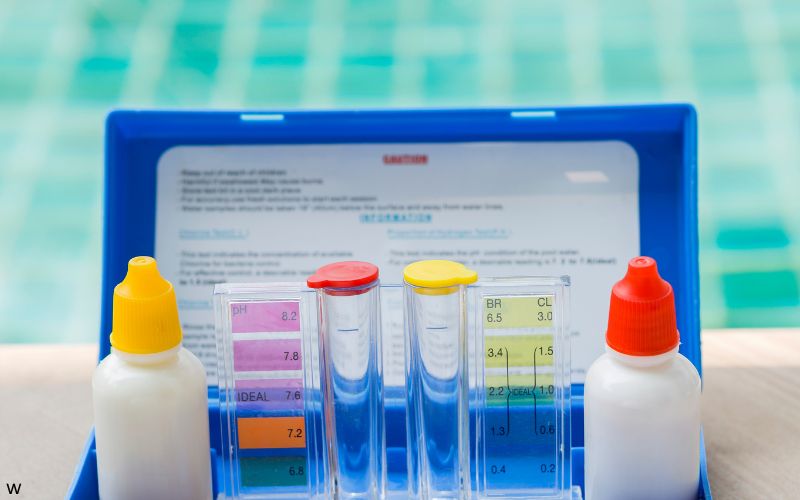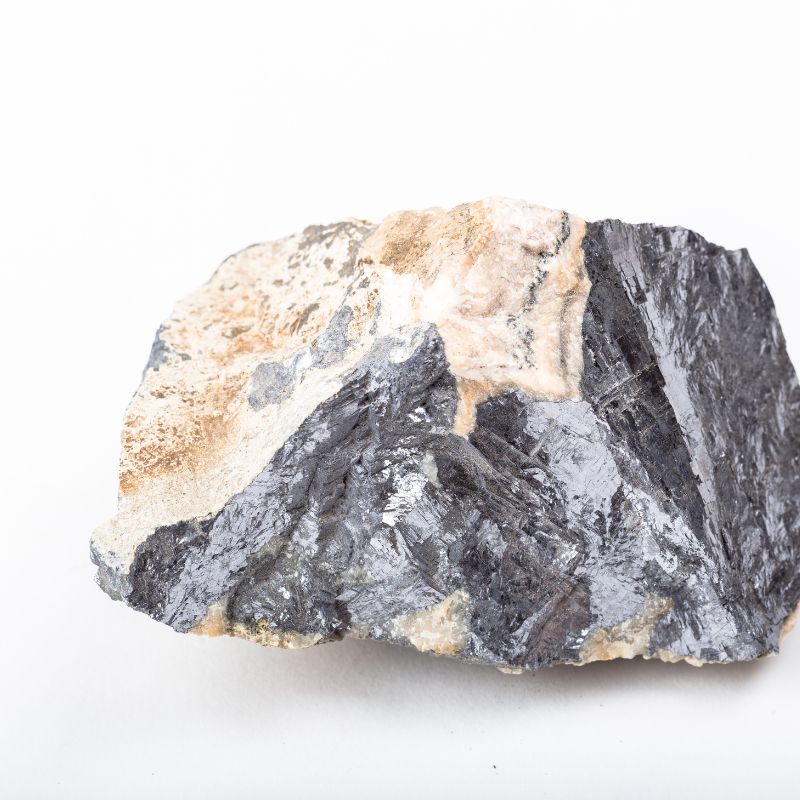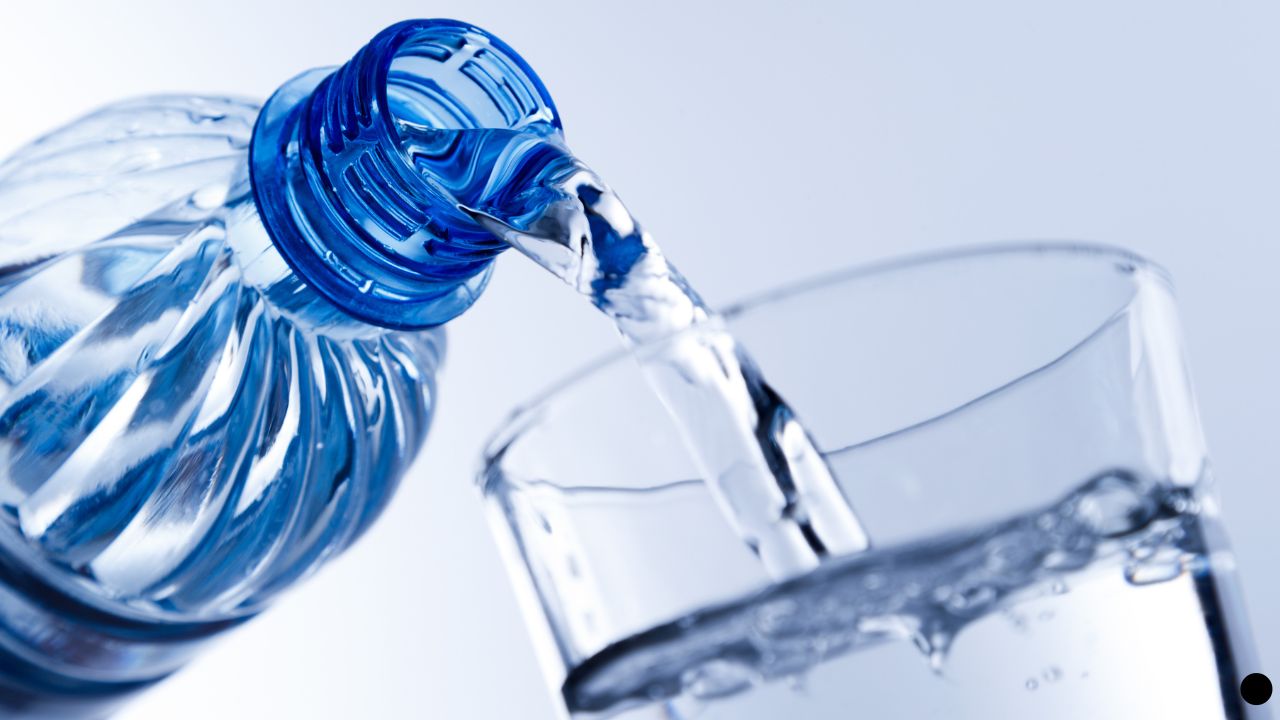Albuquerque Water Quality at a Glance
moderate concerns
Is Albuquerque Water Safe to Drink?
Generally Yes, With Monitoring – Albuquerque’s water meets all federal and state standards and is recognized for good taste. However, the city has elevated levels of arsenic approaching federal limits, high chromium-6 concentrations, and various disinfection byproducts. The water authority tests over 5,500 samples annually from wells, storage tanks, and customer taps.
⚠️ Key Concerns for Albuquerque Residents
- Arsenic: Natural contamination with levels of 2-9 PPB, approaching the 10 PPB federal limit
- Chromium-6: Cancer-causing hexavalent chromium at 970 parts per trillion – 49x higher than safety guidelines
- Disinfection Byproducts: Trihalomethanes and haloacetic acids from chlorine treatment increasing cancer risk
- Lead Risk: 10% of samples exceed 2 PPB from older plumbing, though no lead service lines exist
- Radium & Nitrates: Levels exceeding health guidelines according to independent testing
Read the full report below for detailed analysis, treatment plant information, and water filtration recommendations for Albuquerque residents.
Albuquerque – New Mexico – Water Quality Report 2025: PFAS Testing, Infrastructure Concerns & Safety across your city
The Albuquerque Bernalillo County Water Utility Authority (ABCWUA) manages a complex water system serving over 600,000 residents across the greater Albuquerque metropolitan area. Established in 2003 as an independent utility, the system includes approximately 3,100 miles of water mains, over 90 wells, reservoirs and pumping stations, and advanced treatment facilities, delivering water to New Mexico’s largest city.
Albuquerque draws its drinking water from two primary sources: approximately 70% from the San Juan-Chama Project, which diverts water from the Colorado River Basin tributaries through the Rio Grande watershed, and 30% from a system of deep aquifer wells that tap the underlying Middle Rio Grande Basin aquifer. The utility has successfully transitioned from nearly complete groundwater dependence to a sustainable mix of surface water and aquifer sources. While Albuquerque’s water meets all federal and state standards, the city faces challenges with naturally occurring arsenic, hexavalent chromium contamination, and disinfection byproducts. The utility conducts over 5,500 annual water quality tests and has implemented significant investments in infrastructure modernization, conservation programs, and specialized treatment systems to address these concerns.

Albuquerque Water Quality: Current Status (2024-2025)
Latest Testing Results
- Arsenic Levels: Recent testing shows average arsenic levels of 2 parts per billion (ppb), with maximum detected levels reaching 9 ppb, approaching but remaining below the EPA maximum contaminant level of 10 ppb.
- Hexavalent Chromium: Testing reveals levels of 970 parts per trillion (ppt), which is 49 times higher than the 20 ppt concentration considered to have negligible cancer risk impact.
- Lead Levels: Testing shows 10% of samples exceed 2 ppb, though the water system contains no lead service lines, with contamination occurring through older household plumbing.
- Testing Scope: Albuquerque conducts over 5,500 water quality tests annually across wells, storage tanks, customer taps, and throughout the distribution network.
- Compliance Status: Albuquerque’s water meets all federal and state drinking water standards, maintaining full compliance with EPA and New Mexico Environment Department regulations.
Diverse Water Sources
- San Juan-Chama Surface Water: Primary source (approximately 70% of supply) provided by the San Juan-Chama Project, which diverts water from Colorado River tributaries to the Rio Grande watershed.
- Groundwater Wells: Secondary source (approximately 30% of supply) drawn from about 90 deep aquifer wells that tap the Middle Rio Grande Basin aquifer, providing drought resilience.
- Watershed Protection: Comprehensive source water protection program for both the upper Rio Grande watershed and aquifer recharge zones, including land management practices and pollution prevention initiatives.
Advanced Treatment Technology
- State-of-the-Art Plant: The San Juan-Chama Drinking Water Treatment Plant utilizes multiple treatment processes including coagulation, flocculation, sedimentation, ozonation, granular media filtration, and chlorine disinfection.
- Arsenic Removal Systems: Specialized treatment processes at groundwater facilities remove naturally occurring arsenic from deep aquifer sources, though levels still approach federal standards.
- Disinfection Management: Chlorination provides pathogen control but creates disinfection byproducts including trihalomethanes and haloacetic acids, with continuous monitoring throughout the system.
Infrastructure Modernization
- Pipeline Replacement: Annual replacement of aging water mains, prioritizing areas with high leak rates and oldest infrastructure, with ongoing modernization of the 3,100-mile distribution system.
- Water Reuse Initiatives: Implementation of advanced water recycling projects for non-potable uses, reducing demands on drinking water supplies and enhancing system sustainability.
- Smart Water Management: Advanced metering infrastructure and real-time system monitoring to improve efficiency, reduce water loss, and enhance water quality management across the distribution network.
Customer Protection Initiatives
Albuquerque provides extensive customer support including rebate programs for water-efficient fixtures, comprehensive water conservation education, and payment assistance for qualified residents. The Water Authority’s Customer Assistance Program offers discounts for low-income customers, while educational outreach helps residents understand water quality challenges including arsenic and chromium-6 contamination in the desert environment. Albuquerque’s commitment to environmental justice includes prioritizing infrastructure improvements across all communities while maintaining transparent communication about water quality concerns and system maintenance. The utility’s successful transition from groundwater dependency to a sustainable 70/30 surface-groundwater mix represents a model for responsible water management in arid urban environments.
Recommendations for Albuquerque Residents

Test Your Water
Request water quality data by calling 505-842-WATR or visiting abcwua.org/water-quality. Independent testing is recommended for homes with older plumbing, especially those built between 1982-1987 most at risk for lead contamination.

Conserve Water
Apply for rebates through the Water Authority’s Conservation Program for xeriscaping, efficient appliances, and irrigation upgrades. Call (505) 842-9287 or visit abcwua.org/conservation to learn about available incentives.

Consider Home Filtration
Given arsenic levels approaching federal limits and elevated chromium-6, NSF-certified reverse osmosis systems (Standard 53) are recommended for drinking and cooking water, especially for vulnerable populations including children and pregnant women.

Follow Watering Guidelines
Adhere to the seasonal irrigation schedule to conserve water. During summer restrictions (April 1-October 31), water only before 11 a.m. or after 7 p.m. to reduce evaporation. Even-numbered addresses water on even-numbered days, odd-numbered addresses on odd-numbered days.

Report Issues
Contact 505-842-WATR (9287) immediately for water main breaks, pressure problems, or quality concerns. For after-hours emergencies, call the 24-hour emergency line at the same number.
Quality News About Your Water
Get the comprehensive water quality news coverage you need with our dedicated US Water News Service. From coast to coast, we deliver in-depth reporting and expert analysis on PFAS contamination, EPA regulatory changes, infrastructure developments, and emerging water safety issues affecting communities nationwide. While mainstream media only covers the biggest stories, we provide the detailed, ongoing coverage that helps you understand the full scope of America’s water challenges. Whether you’re a concerned citizen, water professional, or community leader, our daily updates and analytical insights keep you informed about the issues that matter most to public health and environmental safety.
Frequently Asked Questions
Is Albuquerque’s tap water safe to drink?
Albuquerque’s tap water meets all federal and state drinking water standards, though it contains contaminants of concern. The city’s water comes from a combination of surface water from the San Juan-Chama Project (70%) and deep aquifer wells (30%), both undergoing comprehensive treatment including filtration and disinfection.
The Water Authority conducts over 5,500 tests annually to monitor water quality. However, arsenic levels of 2-9 ppb approach the federal limit of 10 ppb, and chromium-6 levels are 49 times higher than safety guidelines. While federally compliant, vulnerable populations including children and pregnant women may wish to consider additional filtration for drinking water.
Why does my water sometimes look cloudy?
Cloudy or milky-looking water is typically caused by tiny air bubbles in the water, which is completely harmless. To check if air is the cause:
1. Fill a clear glass with water and let it stand for a few minutes
2. Watch as the cloudiness clears from bottom to top
3. If the water clears completely, the cloudiness was just air bubbles
Air can enter the water system during repairs or changes in water pressure. If the cloudiness doesn’t clear or if you notice discoloration, contact the Water Authority at 505-842-WATR (9287) for assistance.
Why has Albuquerque shifted from groundwater to surface water?
Albuquerque’s transition from groundwater to a mixed source system was implemented for several crucial reasons:
• Aquifer preservation: Historical groundwater pumping exceeded natural recharge rates, causing aquifer depletion and land subsidence
• Sustainable management: Using renewable surface water allows the aquifer to recover and serves as a drought reserve
• Water rights utilization: The San Juan-Chama Project provides Albuquerque with an allocated share of Colorado River water
• Contaminant management: Surface water typically has lower arsenic levels than groundwater sources
Since implementing this strategy, groundwater levels have begun to recover in many parts of the aquifer, demonstrating the success of this approach while maintaining water quality compliance.
Are there water restrictions in Albuquerque?
Albuquerque maintains year-round water conservation measures due to its desert environment:
Permanent Restrictions:
• Outdoor sprinkler use only between 7 p.m. and 11 a.m. (April 1-October 31)
• Even-numbered addresses water on even days, odd-numbered on odd days
• No water waste (runoff onto streets, sidewalks)
• No washing hard surfaces with hosing
Drought Response:
During severe drought conditions, additional restrictions may include:
• Further limits on outdoor watering days/times
• Restrictions on new landscape installation
• Increased enforcement of water waste regulations
Current status and restrictions are available at abcwua.org or by calling 505-842-WATR.
Contaminants of Concern

Arsenic
Source: Naturally occurring in deep aquifer formations of the Middle Rio Grande Basin; more prevalent in groundwater than surface water sources
Health Effects: Long-term exposure to elevated levels may increase risk of skin lesions, cardiovascular disease, and some cancers including skin, bladder, and lung cancer
Current Levels: Average of 2 ppb with maximum levels of 9 ppb, approaching EPA maximum contaminant level EPA Limit: Maximum contaminant level 10 ppb

Hexavalent Chromium (Chromium-6)
Source: Industrial pollution and natural occurrences in mineral deposits and groundwater; not fully regulated by EPA but monitored by water authority
Health Effects: Carcinogenic metal that can cause cancer; linked to increased risk of stomach tumors and other health issues
Current Levels: 970 parts per trillion, which is 49 times higher than the 20 ppt level determined to have negligible cancer risk Health Guideline: 0.02 ppb (20 ppt) for negligible cancer risk

PFAS Monitoring
Status: Albuquerque Water Authority monitoring shows non-detectable levels of PFAS (per- and polyfluoroalkyl substances) in the drinking water supply as of most recent testing in 2015
Source: PFAS can enter water systems through industrial discharges, firefighting foam, and consumer products, though none have been detected in Albuquerque’s water to date
Health Effects: Exposure to high levels may affect immune system, increase cholesterol levels, and potentially increase risk of certain cancers
Current Status: Non-detectable in all monitoring locations; continued surveillance as EPA implements new regulatory standards for PFAS in drinking water

Disinfection Byproducts
Source: Form when chlorine disinfectants react with naturally occurring organic matter in water during treatment process
Health Effects: Trihalomethanes and haloacetic acids increase risk of bladder cancer and may cause problems during pregnancy; linked to liver and kidney issues
Current Status: Detected at levels that meet federal standards but exceed health guidelines for chloroform, bromodichloromethane, and other disinfection byproducts

Lead
Source: Not present in source water but can enter drinking water through corrosion of household plumbing systems, especially in homes built before 1986; no lead service lines in municipal system
Health Effects: Can cause serious health problems, especially for pregnant women and children; affects physical and mental development; no safe level according to health experts
Current Levels: 10% of samples exceed 2 parts per billion, with contamination occurring through older household plumbing rather than distribution system EPA Action Level: 15 ppb (triggers additional monitoring and treatment)

Radium & Nitrates
Source: Radium occurs naturally in rocks and soil; nitrates can come from agricultural runoff, septic systems, and natural deposits
Health Effects: Radium exposure increases cancer risk; nitrates are dangerous for infants under 6 months, potentially causing “blue baby syndrome”
Current Status: Independent testing indicates levels above health guidelines, though within federal compliance limits; particularly concerning for vulnerable populations
Please read – our information
The information presented on cleanairandwater.net is compiled from official water quality reports, trusted news sources, government websites, and public health resources. While we strive for accuracy and thoroughness in our presentations, we are not scientists, engineers, or qualified water quality professionals.
Our mission is to present water quality information in an accessible, real-world format that helps people understand what’s in their water and make informed decisions about their health and safety. We believe that complex environmental information should be available to everyone in a format that’s easy to understand.
We make every effort to ensure our content is current and accurate, but we cannot guarantee that all information is complete or error-free. This website should not replace official communications from your local water utility or health department. We always recommend consulting official sources for the most up-to-date information regarding your specific water system.
Clean Air and Water is not liable for any unintentional errors, omissions, or outdated information. The content on this site is provided for informational purposes only and should not be considered professional advice.


